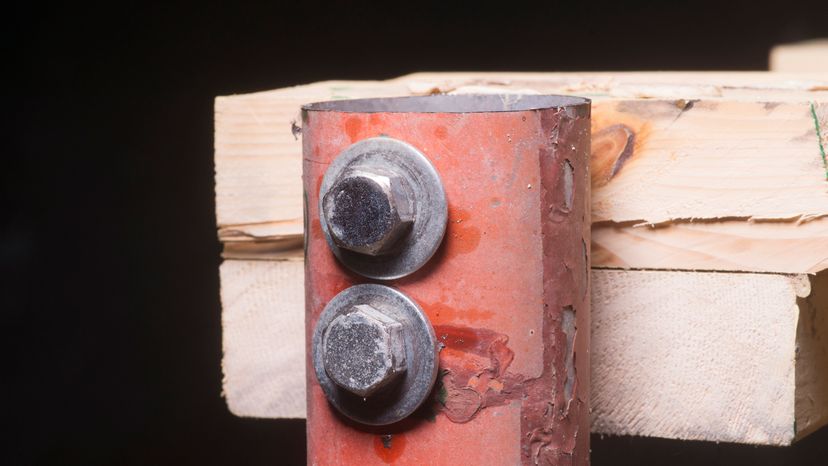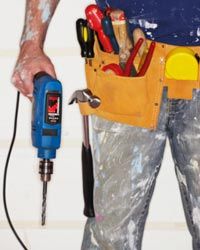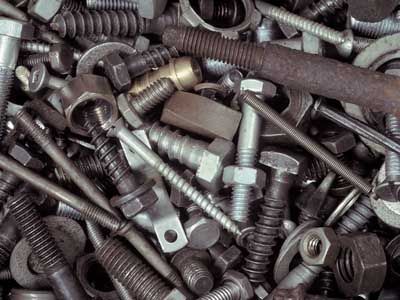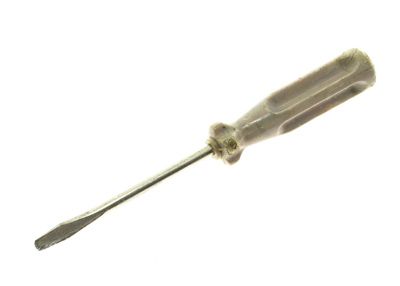
In some ways, lag screws are like other screws. They're relatively common and are used to hold things together. However, lag screws are monstrous compared to ordinary screws like wood screws or sheet metal screws. They're big: They start around 1 inch (2.5 centimeters) long and 1/4-inch thick (0.6 centimeters), and lag screws are used when especially heavy loads have to be borne. They connect lumber around the house, they're used to build things like decks and they keep your flat-screen TV attached to the wall for a long time.
Lag screws are a bit different than some of their counterparts. Whereas wood screws cut their own holes as they're screwed in, lag screws are more like sheet metal screws since they need a pilot hole to screw into. To install a lag screw, first you have to align the materials you're going to screw together. When they're lined up, clamp them together so they stay in place. Then, using a bit with a slightly smaller diameter than your lag screw, drill a hole all the way through the materials where you want the screw to go. Since lag screws have hex heads, you can't use a regular screwdriver to tighten them. Instead, you need to use a ratchet or a nut driver to tighten them. Put a nut on the other end of the lag screw so that the weight it bears is evenly spread along the shaft. If you have the right driver bit for your power drill, you can finish tightening the lag screw with it. Once the screw is securely in place, you can remove the clamps.
Advertisement
For comparison's sake, installing one of the other common types of screw doesn't require a special driver or ratchet. They normally have a slotted or X-shaped mark in the head so they're compatible with flat head or Philips head screwdrivers.


